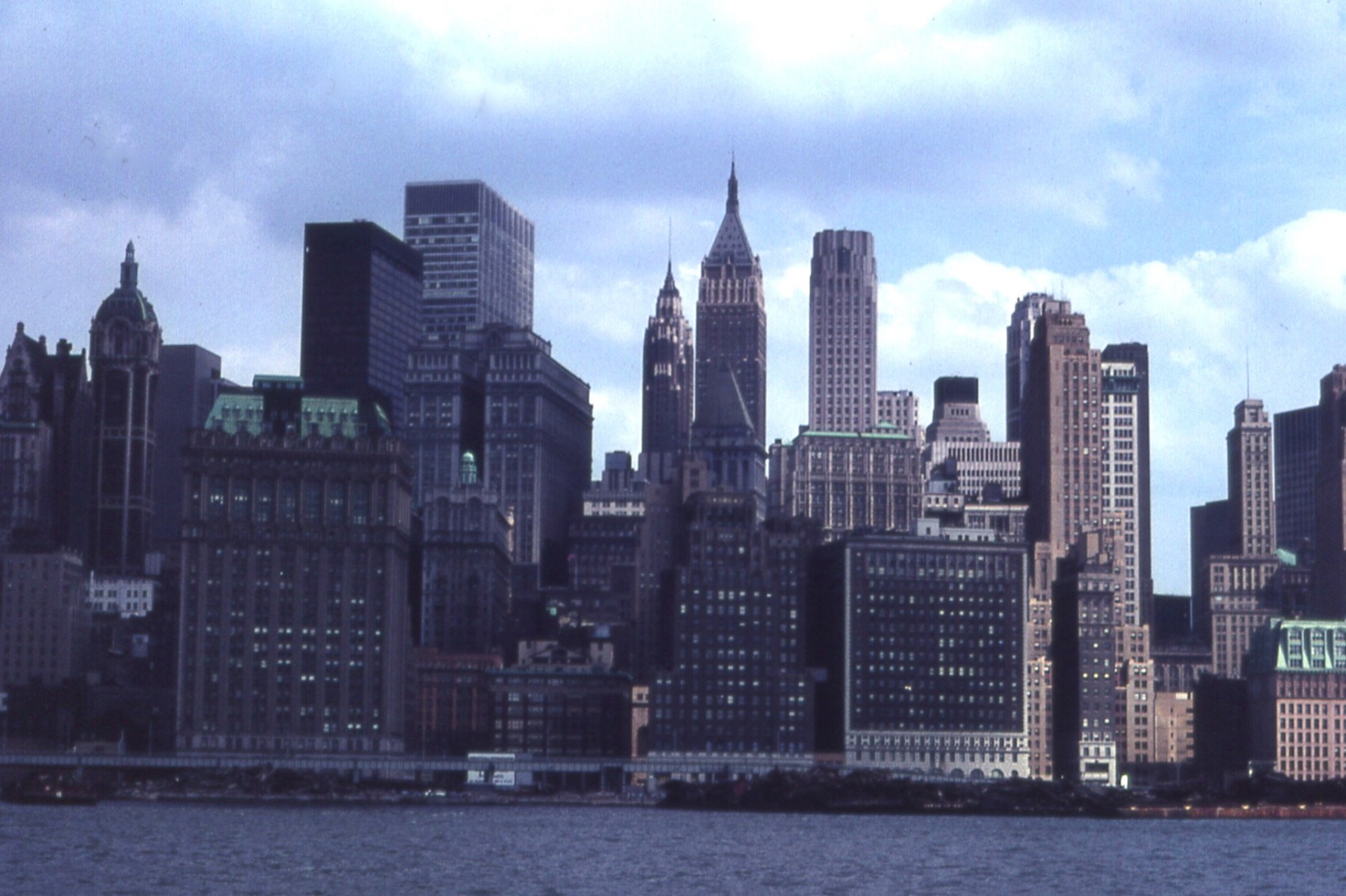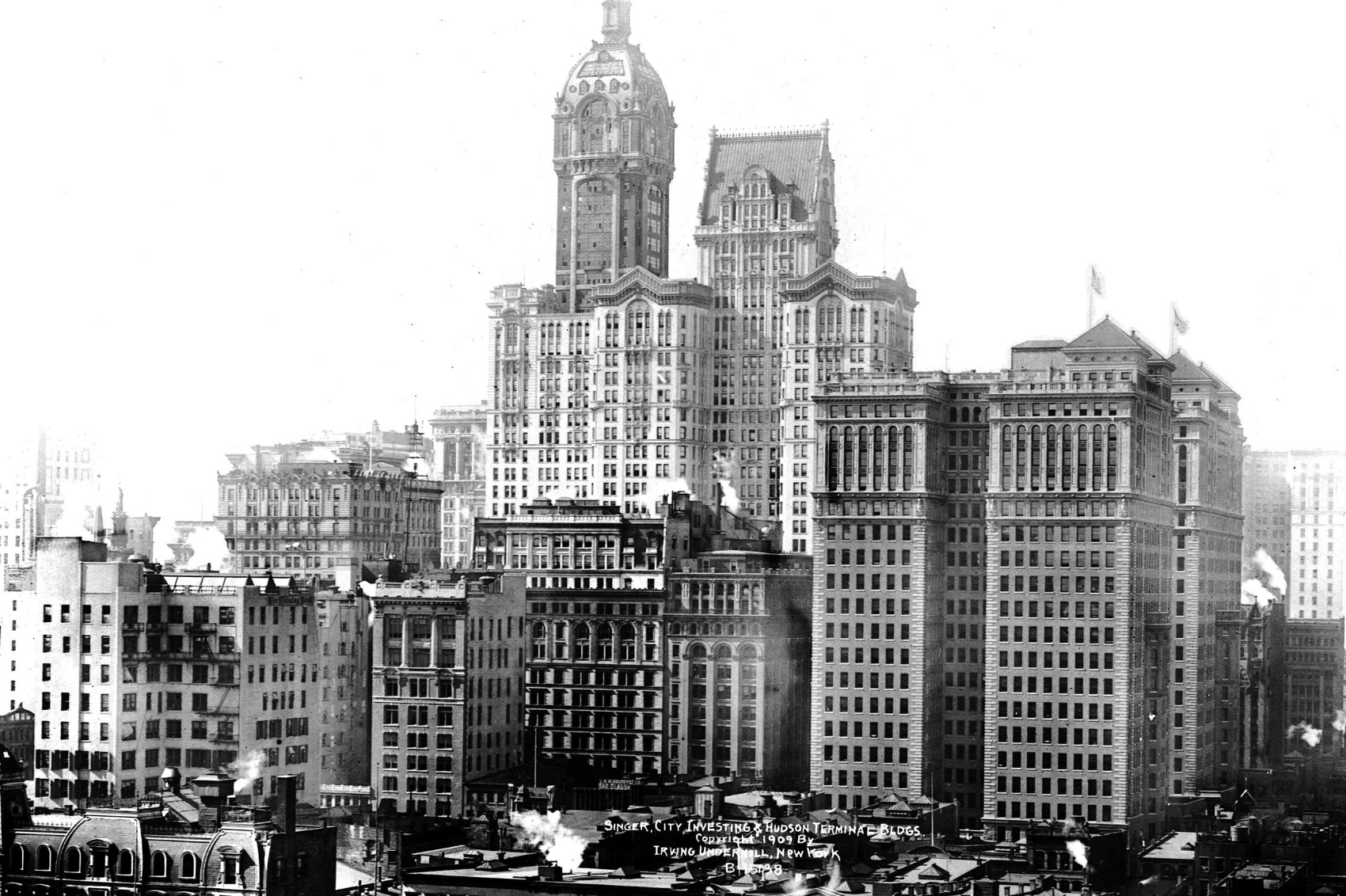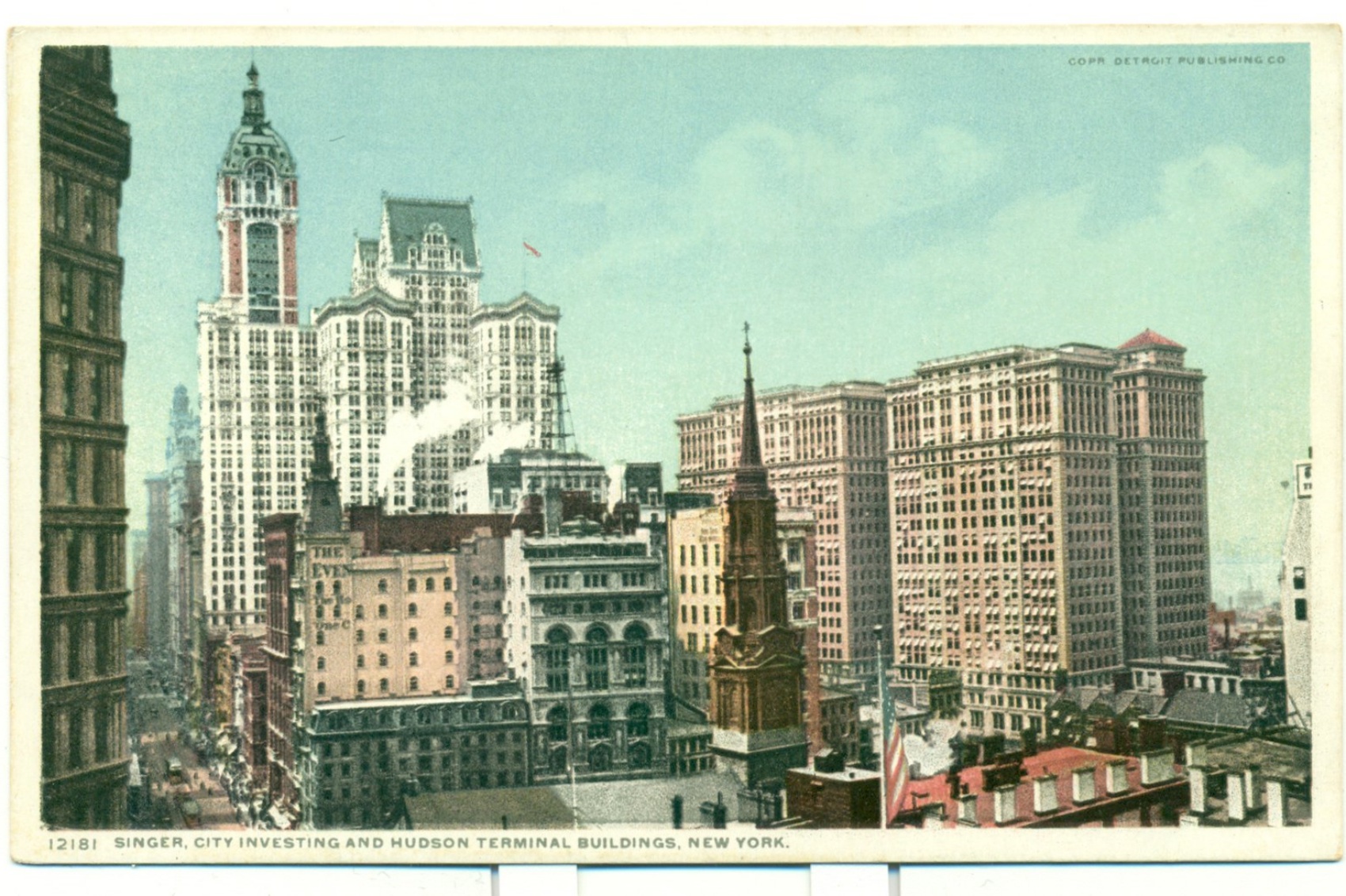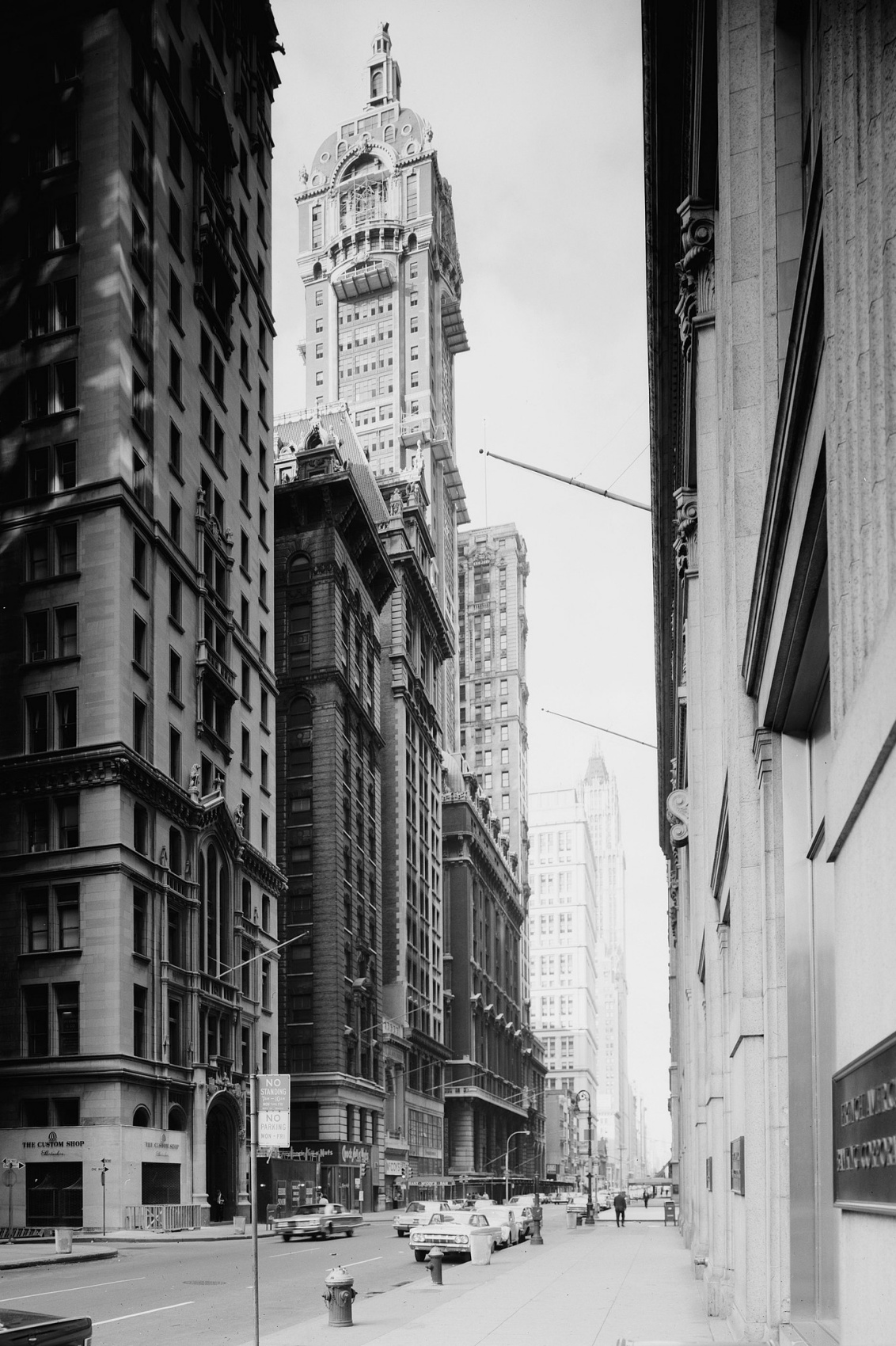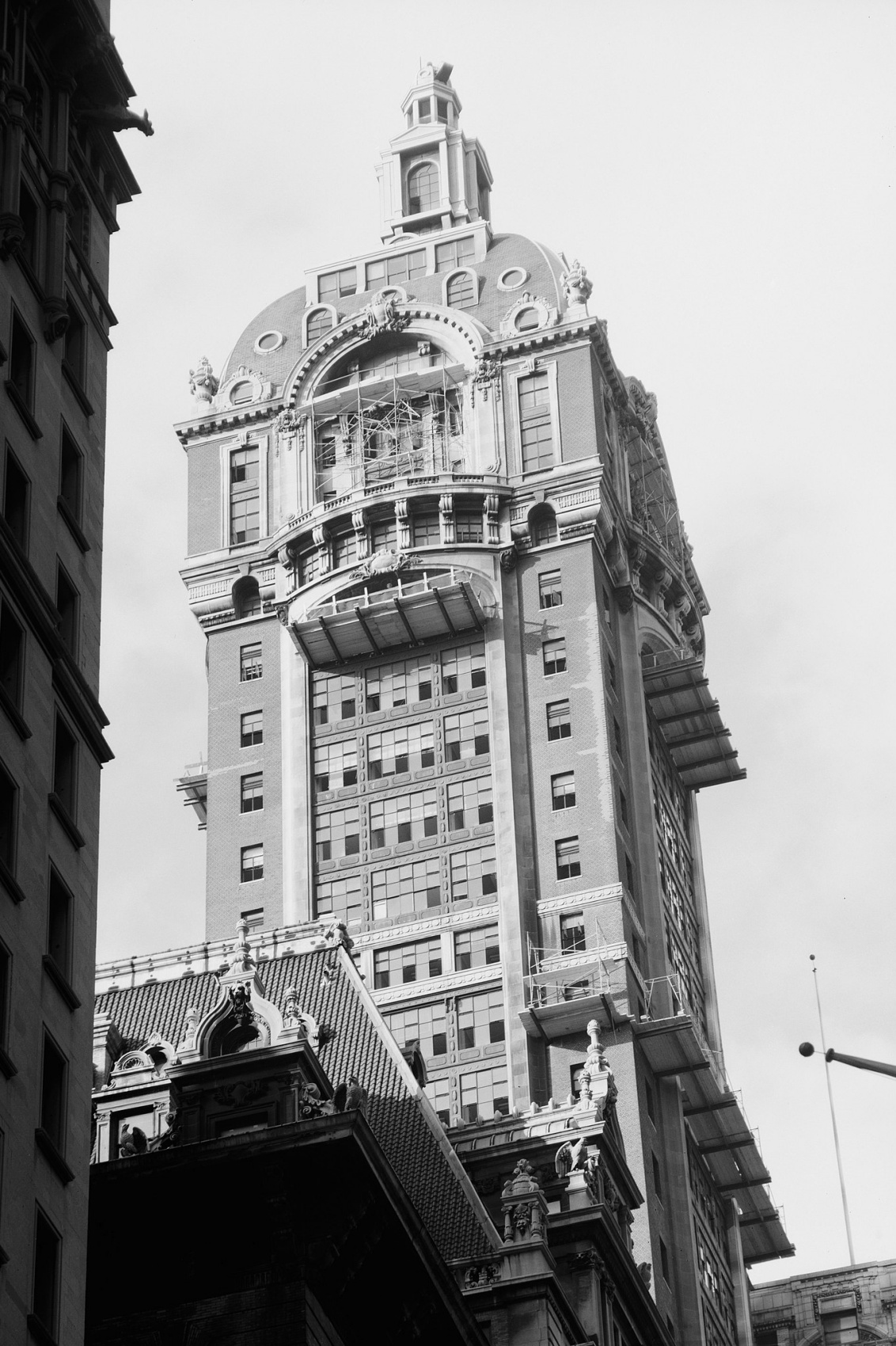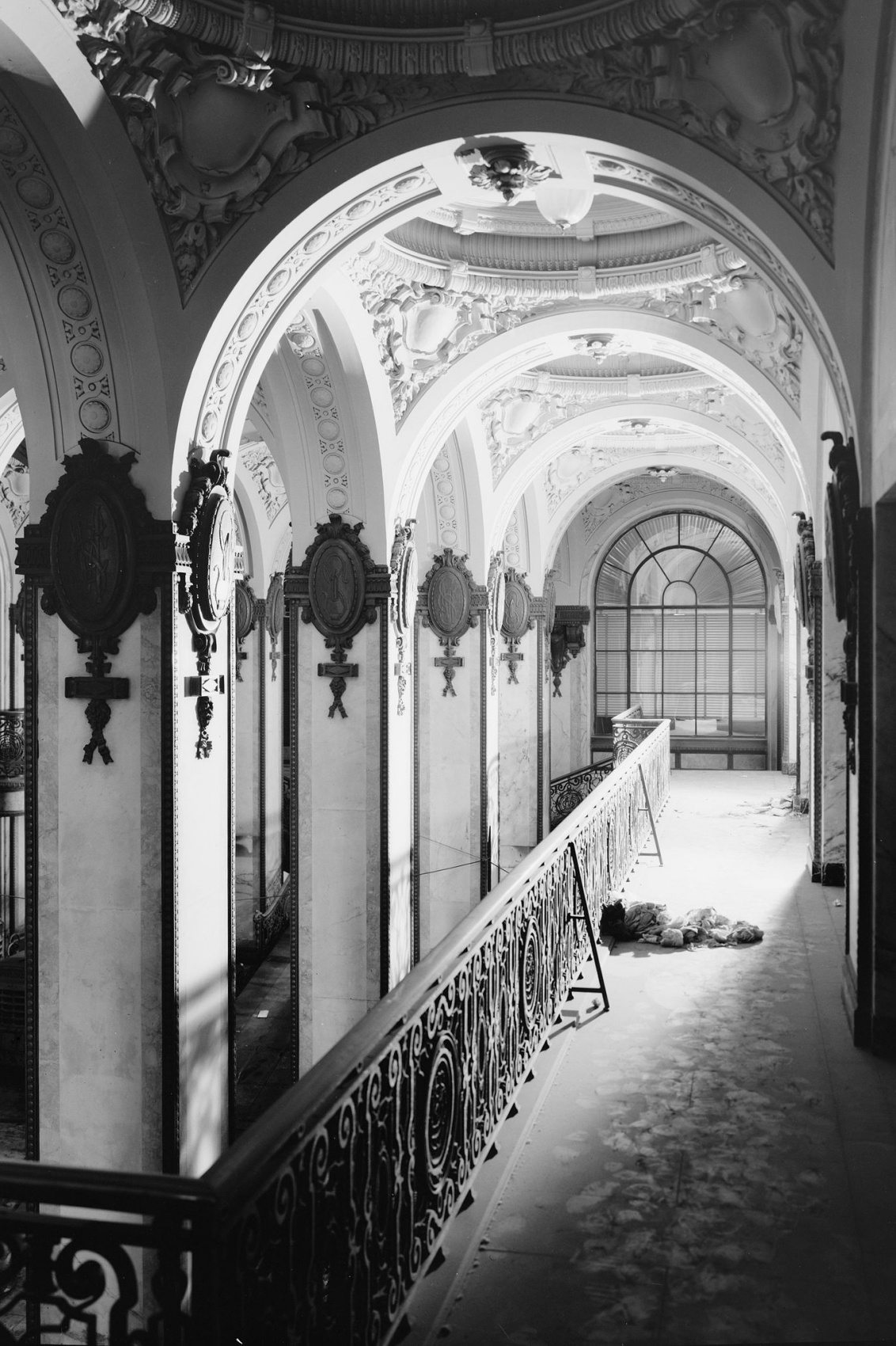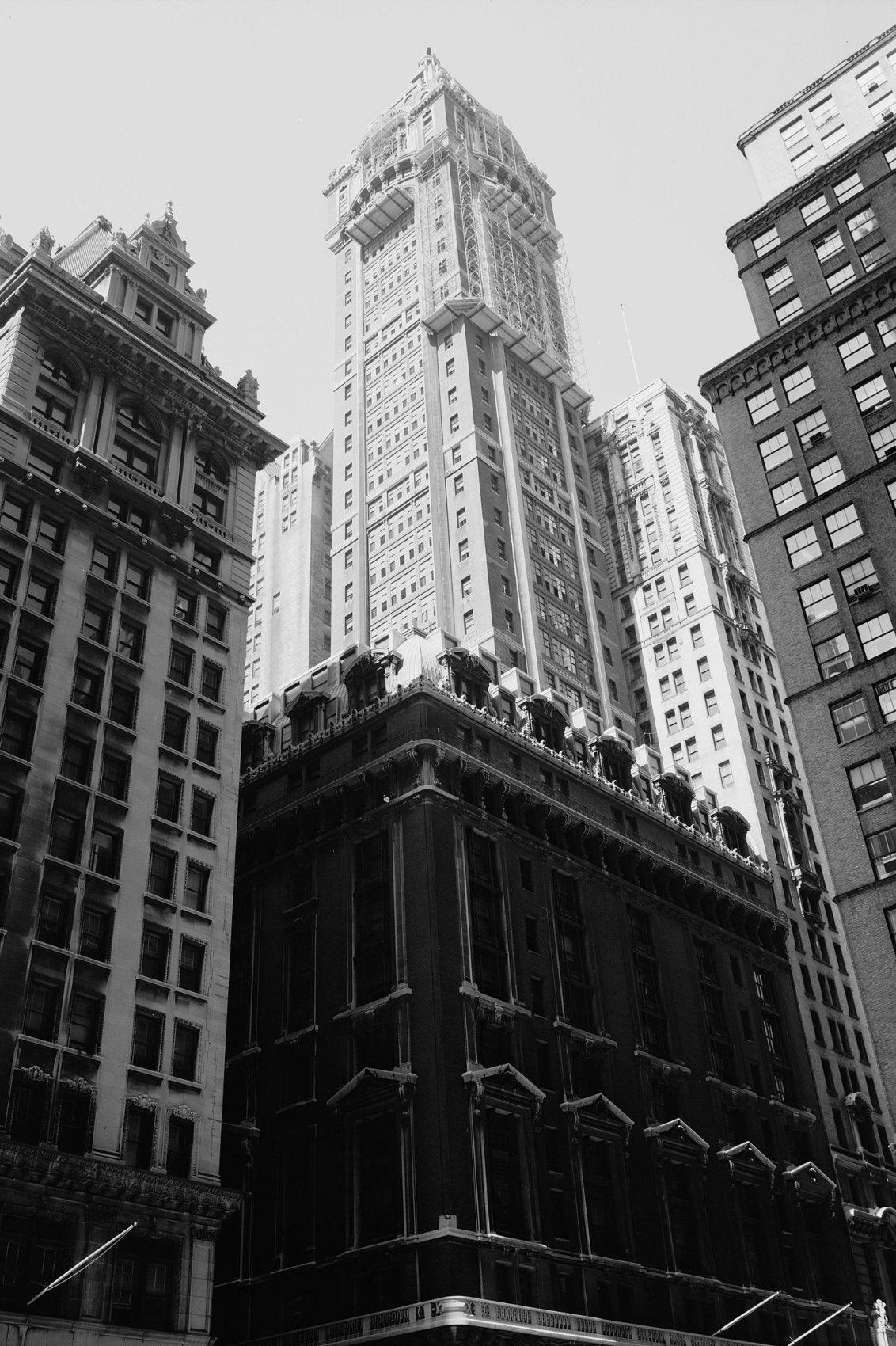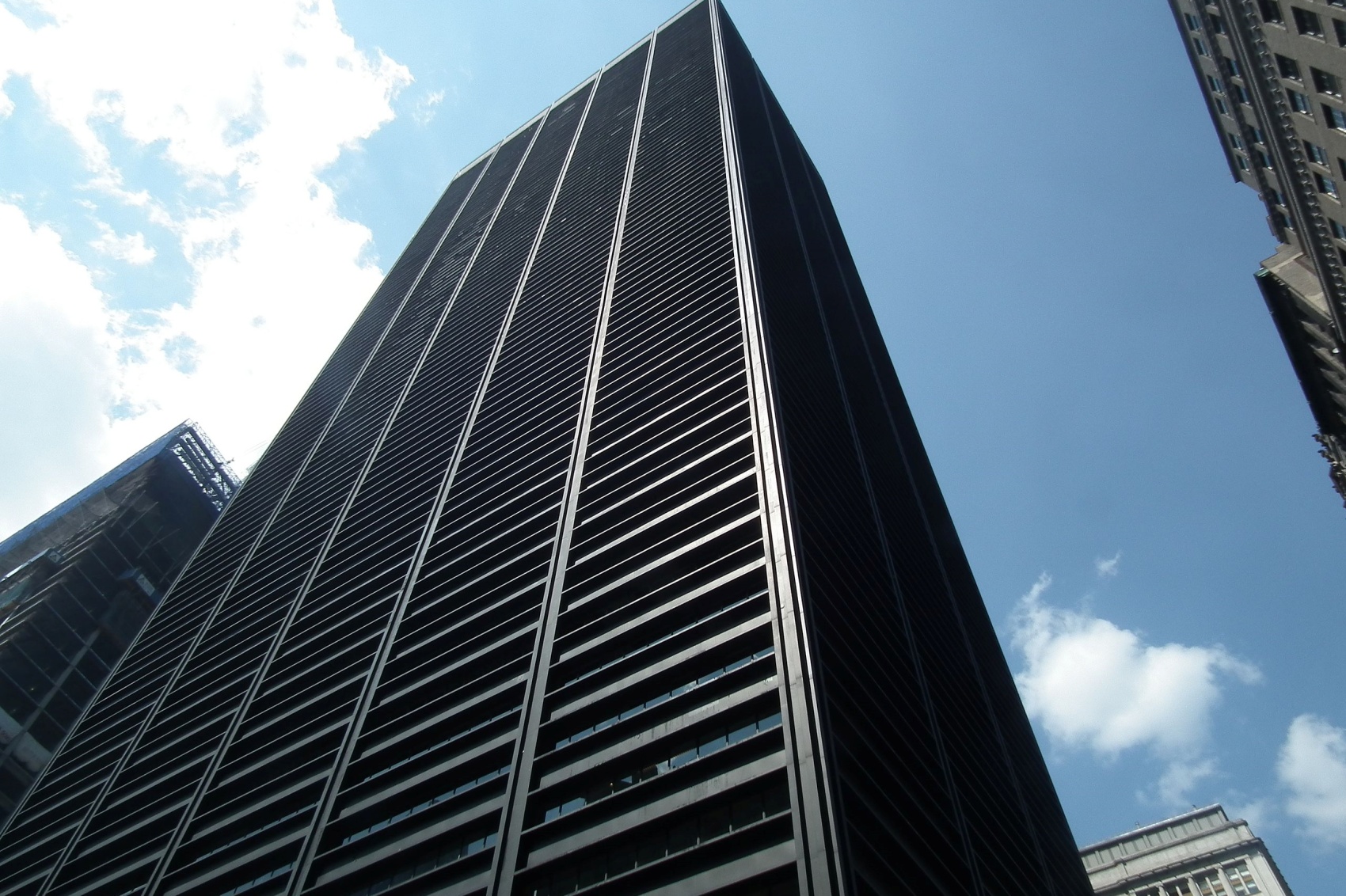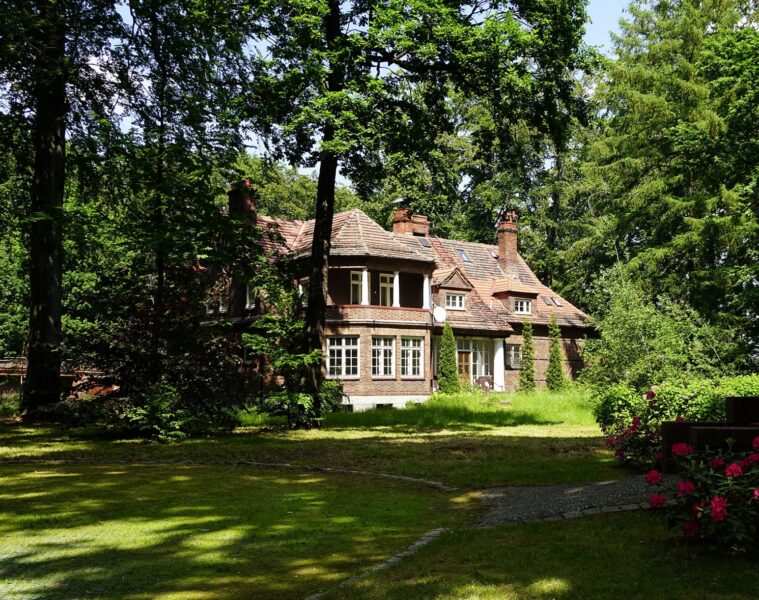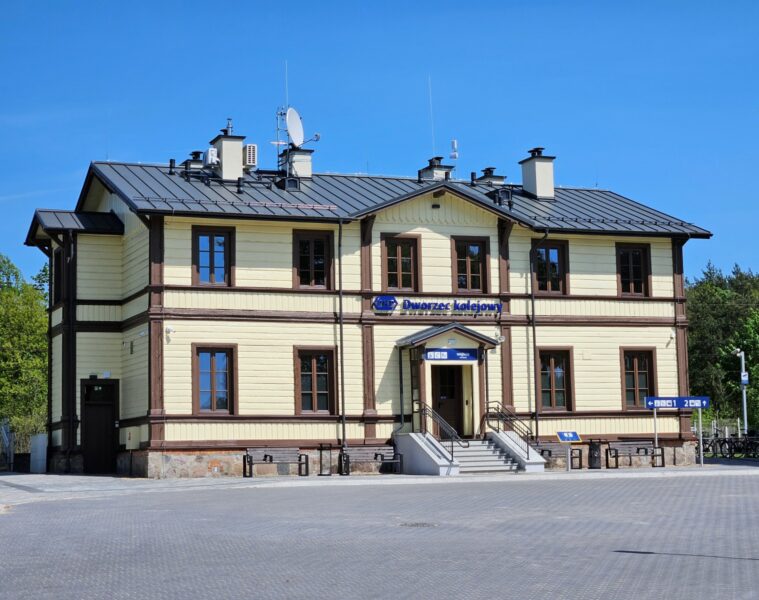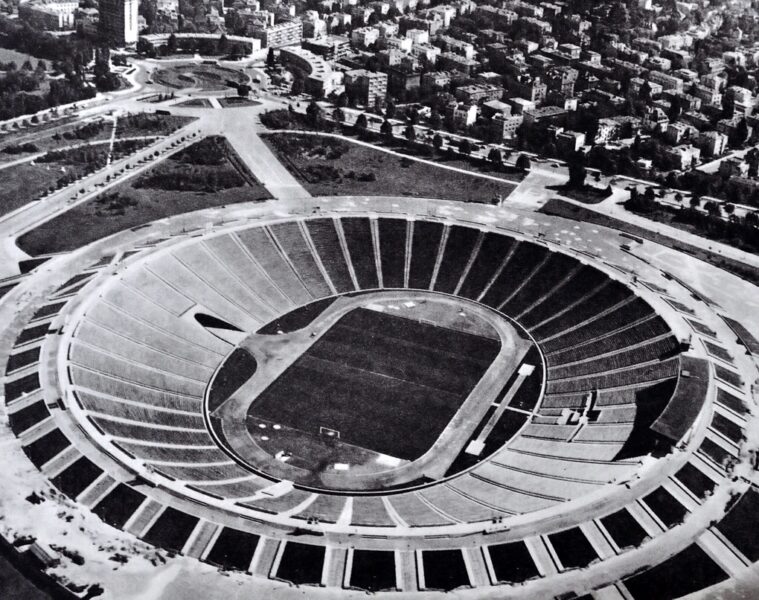The skyscraper, built in 1908, was the world’s tallest building for a year. The Singer company was dominating the sewing machine market at the time and decided to build itself a powerful new headquarters. While the base of the Singer Building looked like an ordinary townhouse, the giant tower made the entire building 187 metres high to the roof. Unfortunately, the landmark skyscraper was demolished in the 1960s. To this day, it is still the third largest building in the world to be demolished.
Singer’s office on the plot of land between Liberty Street and Broadway was built as early as 1899. However, at that time it was a ten-storey building joined to another. Seven years after the office was built, Singer’s then chief executive Fredrick Bourne came up with the idea of building the world’s tallest skyscraper while retaining the original building. The construction was a huge undertaking, with as many as 40 companies participating in the work.
A tailor-made façade
Architect Ernest Flagg opted for an incredibly ornate Beaux-Art style, which made the skyscraper like a work of art. Its façade was a combination of brick, limestone and terracotta. The ornaments were made of copper. As much as 92 tonnes of copper was used in the construction.
The old Singer-Bourne building was covered with new layers of brick and stone. The lower part was decorated with stone. Rustication, i.e. specially dressed stone edges, was visible at the bottom. The upper floors were highlighted with red brick and limestone. A pediment was visible above some of the windows, and an arch three storeys high was built over the entrance. The building grew by four storeys and was widened. Finally, a mansard roof lined with glazed tiles was added.
The tower occupied a very narrow part of the plot. The 20 × 20 m walls narrowed the usable area of the tower. Externally, the tower was arranged in a style similar to the base. The brick walls were banded with stone sections arranged vertically and horizontally. It is noteworthy, however, that even on the top floors, almost invisible from street level, various decorations were added. On the floor below the roof, ornate balconies with sculptures and large windows topped with pediments were installed. A 15-metre high dome was placed on top of the tower. In turn, a lantern was mounted on the slate roof of the dome. Finally, a mast was inserted at the very top of the skyscraper, raising the total height of the building to 205 metres.
Marble skyscraper
The Singer skyscraper was impressive not only from the outside. Inside, the columned lobby was lined with Turkish white marble. Of course, each arch connecting the columns was decorated with a shield and gold leaves carved in (this time Italian) marble. On each pillar were bronze medallions depicting needles, the Singer logo or yarn. The office floors at the base of the building were painted white. In this section, there were up to 40 offices on each floor.
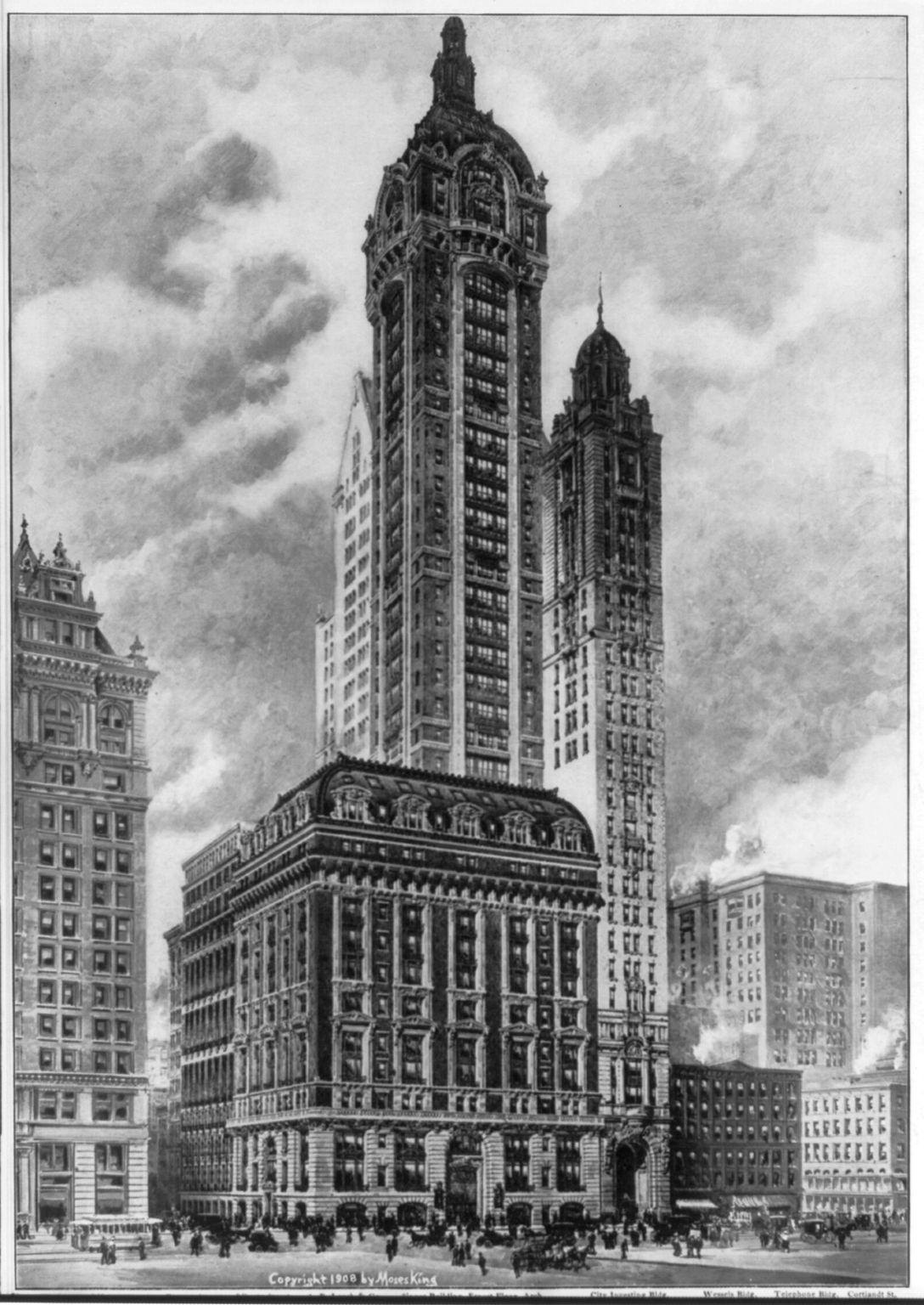
In the tower section, the offices were painted in olive green with metal details. This part of the building housed just 16 offices. Of course, the management offices (those with large balconies) were richly decorated. An observation deck, accessible for a fee of 50 cents, was also opened at a height of 172 metres.
For the time, the building was also technologically advanced. It had 16 electric lifts, drew water from the city’s water treatment plant, and the whole building was equipped with a thermostatic heating system. The entire structure was based on, famously from the Chicago School, a steel frame, which you can read more about HERE.
When completed in 1908. Singer Building was the tallest building in the world. It only enjoyed this title for a year, as the 210 m tall Met Life Tower was built in 1909. In the following years, some of the floors were rented out to banks and various companies. Over time, leasing the building ceased to be profitable. In 1921. Singer wanted to sell the building for $10 million but the deal was not finalised. The building was later renovated and most of the original decoration survived until the late 1940s. In the following decade, automatic lifts were added and air conditioning was installed in the offices.
The needle to the coffin
By the late 1950s, the tower block’s cramped and expensive offices were being abandoned by a number of tenants. Real estate agents therefore began to encourage companies to rent offices in the prestigious part of the tower. Unfortunately, by the 1960s, the Singer skyscraper was significantly lagging behind other Manhattan buildings in terms of standards. The last hope for the skyscraper was the New York Stock Exchange. Brokers were encouraged to open their offices in it. However, rising prices in the district scared off potential tenants. Even the establishment of the New York City Landmarks Preservation Commission in 1967 did not help the situation. It was recognised that the Singer skyscraper could become a landmark, but it would have to find tenants. Nothing of the sort happened and in 1969 the demolition of the building came to an end.
The Singer Building was one of the first high-rise buildings in New York. In the 1960s, rising property prices in Manhattan contributed to many other demolitions. I described a similar case in an article about NYC’s first office building, which can be read HERE. The nail in the coffin was its tall, narrow tower. On the plot of land left by the Singer skyscraper stood Liberty One Plaza. It is a simple in form but spacious office building that still stands on the site today.
Source: World’s Tallest Towers
Also read: Architecture | Skyscraper | History | Interesting facts | New York | United States | whiteMAD on Instagram


